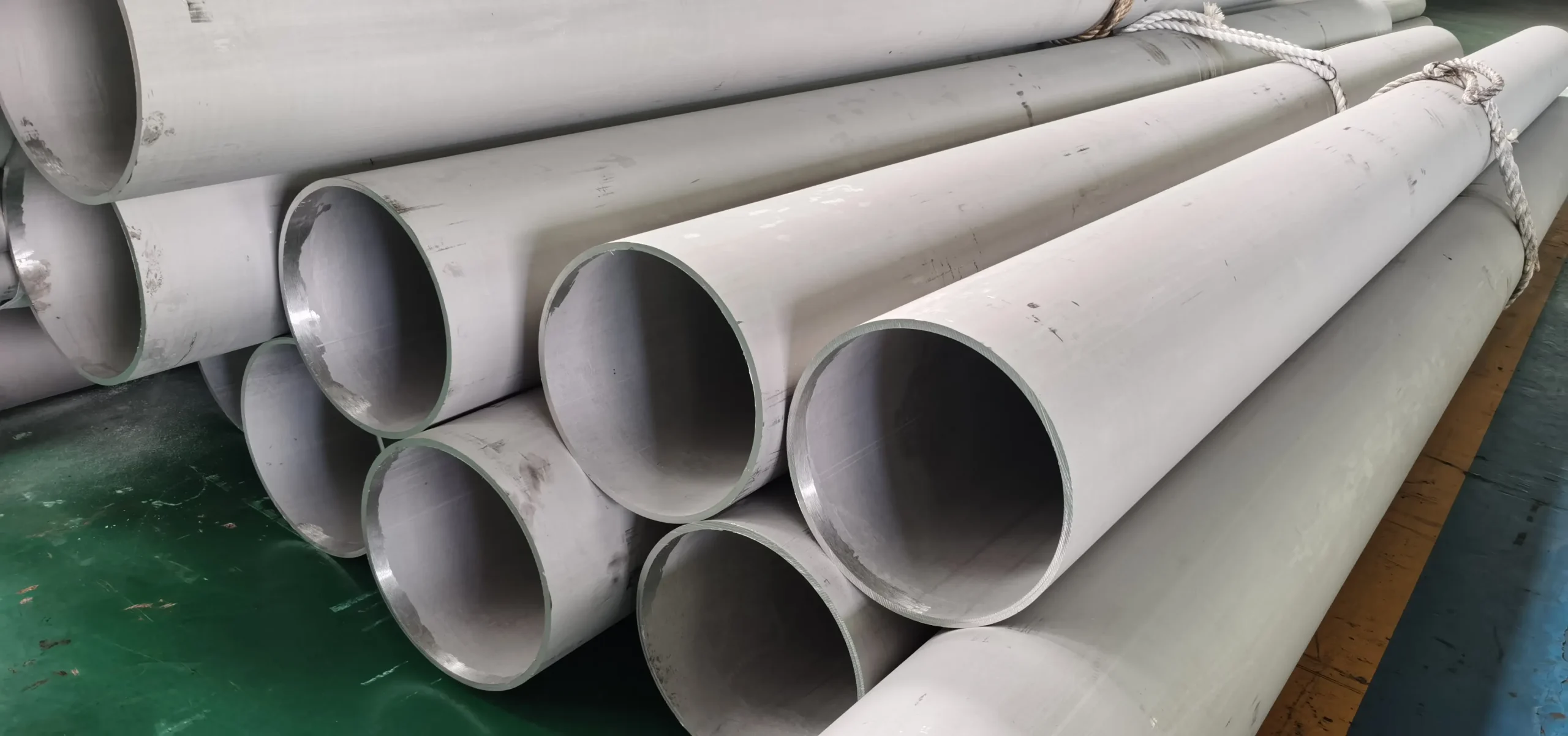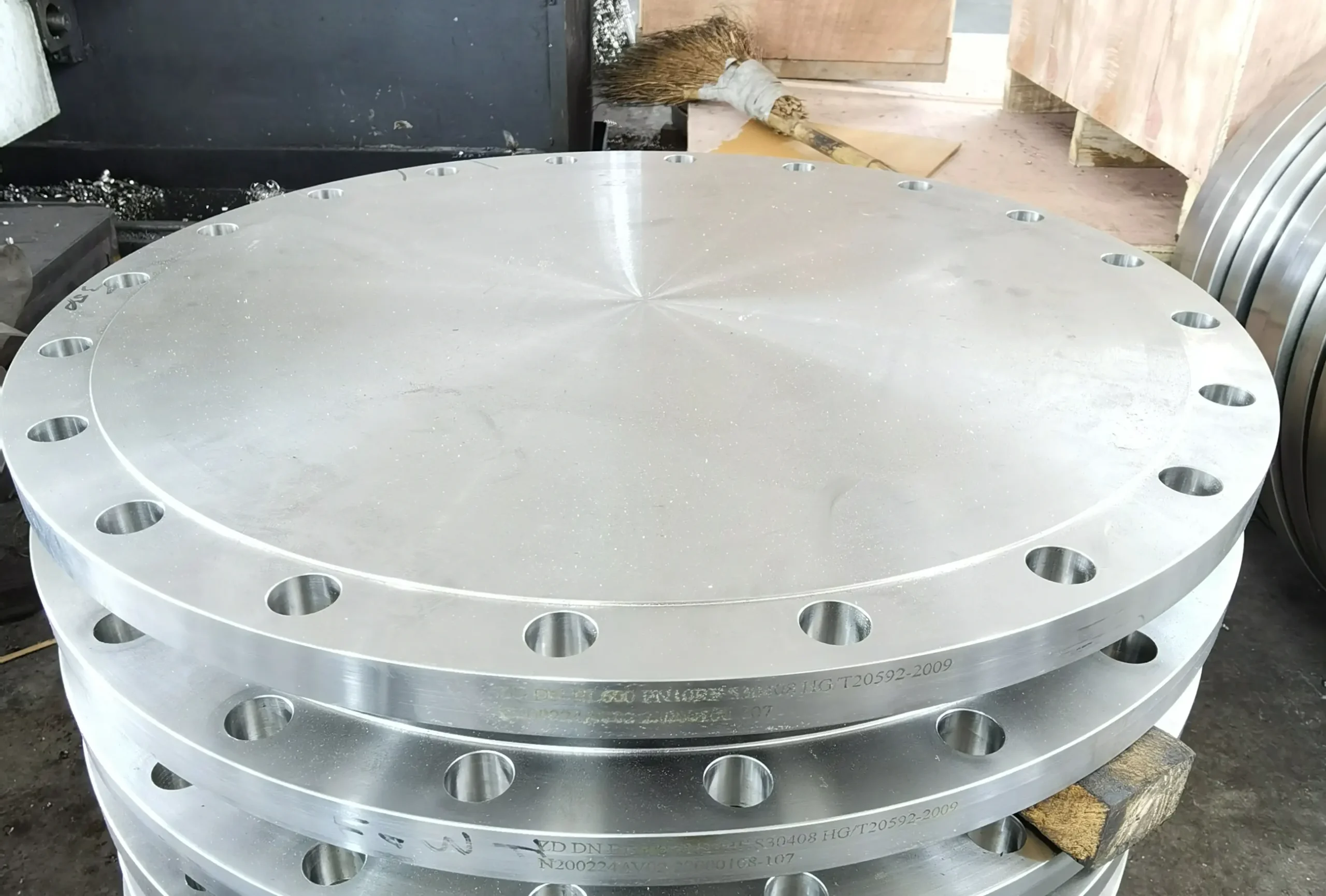Placa de aço inoxidável é um material pesado e altamente durável. Ele forma a estrutura de muitas aplicações industriais de serviço pesado. Esse material é crucial para a fabricação de produtos pesados conexões para tubos de aço inoxidável. Ele também oferece integridade estrutural para grandes tubos de aço inoxidável. Alta resistência e robusta resistência à corrosão são suas características definidoras. Compreender as diferenças entre Aço e aço inoxidável é a primeira etapa da seleção de materiais.
O que é uma placa de aço inoxidável
Uma chapa de aço inoxidável é um produto metálico plano e laminado. Sua espessura é normalmente de 6 mm (0,25 polegadas) ou mais. As chapas são geralmente produzidas usando o processo Processo de laminação a quente. Esse método cria um material espesso e resistente. As placas são frequentemente usadas quando é necessária uma alta integridade estrutural. Elas servem como um elemento fundamental na construção pesada.
O que fazemos
- Placa
- Folha
- Forjados
- Barra redonda
- Mesa
- Tubos
- Conexões
- Personalizado
Entre em contato conosco para obter mais informações
Vantagens da chapa de aço inoxidável
A espessura desse material em folha confere a ele uma capacidade de carga formidável, tornando-o a opção ideal para suportar objetos pesados.
Esse material possui propriedades anticorrosivas e de resistência à degradação química, o que garante que os componentes para serviços pesados tenham uma vida útil longa, reduzindo ao mínimo os custos de substituição e manutenção.
As placas geralmente são fáceis de soldar usando vários métodos. Isso simplifica a montagem de grandes estruturas. As chapas de aço inoxidável funcionam bem com técnicas comuns de fabricação.
A chapa metálica de aço inoxidável é prontamente cortada, usinada e conformada, permitindo a fabricação de componentes intrincados sob medida. Os acessórios profissionais para tubos de aço inoxidável são normalmente produzidos dessa maneira.
Desvantagens da chapa de aço inoxidável
A espessura desse material resulta em um aumento significativo no peso, elevando assim os custos de manuseio e transporte e, possivelmente, exigindo suporte estrutural adicional.
O corte e a conformação de chapas grossas requerem equipamentos especializados, o que aumenta o tempo de fabricação. Operações eficientes requerem maquinário mais potente.
As placas são mais caras do que as chapas mais finas ou Chapa de aço inoxidável material. O custo reflete o volume da liga usada. O investimento mais alto é justificado pela resistência.
A espessura da chapa restringe as curvas apertadas. A conformação complexa exige ferramentas especiais. Isso limita a flexibilidade do projeto em determinadas aplicações.
Classes, processos e recursos
| Grau | Principais recursos | Uso primário | Processo principal | Elementos-chave |
|---|---|---|---|---|
| 304 | Versátil, comum | Tanques, suportes estruturais | Laminação a quente | Cr, Ni |
| 316 | Resistência a cloretos | Cascos marítimos, plataformas offshore | Mo, Cr, Ni | |
| 2205 | Alta resistência/corrosão | Conchas de vasos de pressão | N, Cr, Mo | |
| 304L | Baixo carbono | Construção soldada | Baixo C, Cr, Ni |
Tipos de acabamento de superfície
| Acabamento | Aparência | Fabricação |
|---|---|---|
| No. 1 | Sem brilho, áspero | Como laminados a quente |
| 2B | Suave, fosco | Após a laminação a frio |
| BA | Brilhante, reflexivo | Recozimento especial |
Placa de aço inoxidável vs. outras formas
| Formulário | Espessura | Força | Uso primário |
|---|---|---|---|
| Placa de aço inoxidável | Grosso | Alta | Estrutural |
| Chapa de aço inoxidável | Fino | Médio | Estética |
| Barra redonda de aço inoxidável | Sólido | Extremo | Usinagem |
Aplicações em sistemas de tubulação
Flanges para serviços pesados: Flanges cegos e flanges de ancoragem são cortados da chapa. Elas são essenciais para conectar tubos de aço inoxidável de grande diâmetro. A espessura da chapa garante uma vedação de alta pressão.
Vasos de pressão e tanques: As placas são laminadas e soldadas para criar vasos. Eles contêm com segurança líquidos e gases sob pressão. Essa é uma aplicação vital em fábricas de produtos químicos.
Acessórios de solda Blanks: Os acessórios para tubos de aço inoxidável mais espessos, como os redutores de parede pesada, começam como chapas. O material é então processado e formado. Isso garante a espessura de parede necessária.
Componentes fabricados: A chapa de aço inoxidável é usada para calçados e suportes de tubos. Isso evita o contato direto com outros metais. Ela protege a integridade de Tubos métricos de aço inoxidável linhas.
Como a Kaysuns garante a qualidade da chapa de aço inoxidável
A manutenção da qualidade exige um controle rigoroso. O material deve atender a padrões como ASTM A240. A inspeção visual garante um acabamento perfeito da superfície. Os testes químicos verificam a composição da liga.
Degradação e manutenção
A chapa espessa resiste à corrosão rápida. Entretanto, a exposição prolongada pode causar desgaste. A inspeção regular evita problemas. Procure por sinais de Ferrugem do flange nos componentes conectados. Adequado Tratamento pós-soldagem é vital após a soldagem das placas. Isso corrige qualquer redução na resistência à corrosão. A manutenção da camada protetora da chapa garante sua longevidade.
Contate-nos
- RM901 No.22 Tangjiaqiao Road Wenzhou China
- +86 577 8551 1171
- [email protected]
- https://www.kaysuns.com/



